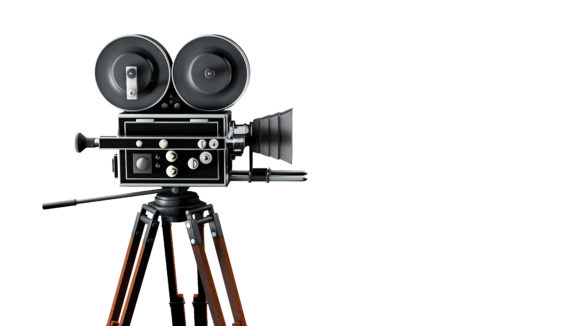The entertainment industry is prepping for its return to work after a near total shutdown from COVID-19. What the future holds for the entertainment industry and insurance brokers serving this sector remains unclear, experts say.
John A. Hamby, senior managing director, national entertainment practice leader, DeWitt Stern of California Insurance Services, a division of Risk Strategies Co., said the film and television space is still essentially shut down. He doesn’t see the industry picking up production until at least July, even into August, September or October. Much of that decision lies within jurisdictional restrictions and guidelines, he noted.
“For example, if a project was intending on filming in a particular city and wanted to recommence in that same city, it will depend on that city’s restrictions,” he said.
Film and television projects have large casts and crews. That makes social distancing rules difficult to follow, Hamby said. “How can you stay six feet apart when you have 200 cast and crew in a confined space?” he said. “That’s something that the film and TV industry is grappling with and we will likely see some new guidelines established.”
Christine Sadofsky, global entertainment managing principal, commercial risks, at EPIC Insurance Brokers & Consultants, said the real question that everyone is asking in entertainment: When will “after” the crisis begin?
“The entertainment losses will take six months to one year to truly flush out and with that lag in the claim process, the interest of insurers to ‘return to normal’ will be long after that,” she said.
Right now, and for the foreseeable future, all entertainment accounts are being written without communicable disease protection, Sadofsky said. “If the insurer has not yet filed their exclusionary language with the various insurance departments, they are simply removing the coverage that would have responded to a communicable disease claim.”
Entertainment’s comeback will be slower than other industries, too.
“I think the industry will lag behind most others because most entertainment/leisure activities involve large gatherings, and even if the venue re-opens, the consumers will be hesitant to return unless there are well communicated protections and safety protocols implemented,” Sadofsky added.
As far as the entertainment insurance sector coming back, Sadofsky said new markets that have the capital and resources to step up and fill the gaps created by this pandemic will be important going forward, similar to after events like 9/11.
“When the new markets start providing protection, the existing insurers will eventually start offering the coverage and a new market will have emerged,” she said. That’s going to take changes in how the entertainment industry manages its risk to infectious disease, she added.
Sadofsky sees some production clients working on filming strategies that will manage the risk of COVID-19 by requiring the cast/crew to remain on location for the entire duration of the filming. And prior to the start of filming, all members would be tested for the virus. Ongoing risk management would need to include daily sanitization of the production sets, equipment, location, vehicles, etc. “And taking temperatures to monitor the health of everyone concerned,” she said.
This will mean higher costs for all parties involved, she added. For film and TV, the shift back to the insured to manage this new risk while creating production schedules that can allow for delays (for further quarantines) means having extra money in the budget to cover the costs. “These higher budgets will be borne by the networks and ultimately borne by consumers,” Sadofsky said.
Live events, like those in the music industry or on Broadway, could be even more challenging to “social distance” the audience. “The cost to produce the live events doesn’t support reopening with one-third of the patrons in order to create the distancing; and if the entertainment companies cannot buy protection, they may not take the risk of reopening at all,” Sadofsky said.
She said other countries are already exploring how to get governments involved in reinsuring these risks. “As members of the Media Insurance Network, a global network of media brokers, I get feedback from the responses from other countries and in some places, the governments are looking to create an insurance pool to reinsure the risk. If this takes place, then those markets will return sooner than others.”
But for right now, the transfer of risk in the United States is not currently possible, she said. “Again, it going to take new markets to step up and solve this problem.” Current insurers will not be in a position to take new risk any time soon, she said.
While Hamby expects that many film and TV companies will have some insurance coverage, the coverage is nowhere near the cost of what they expect to lose from COVID-19 disruption.
According to Hamby, most film and TV studios carry a specialized film production package policy, which is where that civil authority coverage rests. Unlike a typical commercial business interruption policy, a specialized film production package policy with civil authority coverage doesn’t necessarily require physical loss or damage to trigger coverage. “The verbiage varies a little bit from carrier to carrier, but essentially the trigger is any act of a civil authority, municipality, state, government, etc., that prohibits filming from taking place or continuing.”
Even so, Hamby added that even though claims first started being submitted about six weeks ago, he’s only seen just a handful of claim confirmations or coverage confirmations. “I think more will be coming in the weeks ahead.”

Future Products
Not unlike the evolution of terrorism insurance, the development of a pandemic risk transfer mechanism will be critical moving forward.
Hamby said that brokers and their insurance partners are already looking at new products, with pandemic coverage, to help entertainment risks going forward.
“We don’t have it yet, but I would hope that within the next 30 to 90 days we will have some type of pandemic insurance available to be purchased by the film and TV studios, which would essentially augment their coverage given their primary policy would have the COVID 19 exclusion,” he said. “But right now, we don’t know what that would look like specifically. We don’t know what limits might be available. We don’t know what the associated costs would be, but we know that there will be a demand for it.”
A demand that wasn’t there just a few months ago, he said.
“If we approached a film studio client a year ago and suggested, ‘Hey, we have pandemic insurance, would you like to buy it?’ I think 95% or more would have looked at us like, ‘Why would we consider that? That’ll never happen.'”
There could also be the development of other ancillary insurance products, Sadofsky said.
“There is a market currently working with our teams to fill a temporary gap for promoters and production companies who have already committed funds or made advances to artists by protecting that promoter or production company from now until things reopen,” she said. “The coverage would pay if the key cast/talent should die before the shows are reopened, and it would trigger after a long waiting period if a disability were to occur as well.”
This is called contract protection insurance and is a combination life/disability product for the key cast/or talent.
Lessons Learned
Sadofsky said much has been learned through managing the risks of COVID-19, and more will come.
“As much as we plan and try to manage the risks with our clients, things can still happen outside of our control,” she said. “I personally sit with clients each renewal period, and we literally brainstorm about what can shut down their business. And in all those conversations with all my clients, no one saw this potential.”
Risks like nuclear, chemical, biological and radioactive incidents are excluded from typical insurance policies. But even they can be covered if the client wanted to pay for that insurance, she added.
“Even with all the prior epidemics, SARS for example, it just didn’t give us the sense that an entire country/world could be shut down simultaneously,” Sadofsky said.
Now, she thinks about what’s next.
One good lesson: “This has shown us that we can and will work around these challenges. Look at how many service business are working remotely and getting things done and the positive impact it’s having on the reduced pollution around the world,” she added.
Was this article valuable?
Here are more articles you may enjoy.



 Billionaire NFL Owner Suing Over Billboards Near His LA Stadium
Billionaire NFL Owner Suing Over Billboards Near His LA Stadium  Expense Ratio Analysis: AI, Remote Work Drive Better P/C Insurer Results
Expense Ratio Analysis: AI, Remote Work Drive Better P/C Insurer Results  New York Governor Hochul Vows to Tackle Insurance Affordability, Litigation and Fraud
New York Governor Hochul Vows to Tackle Insurance Affordability, Litigation and Fraud  Supreme Court Rejects Challenge to $2.46B Boy Scouts Sex Abuse Settlement
Supreme Court Rejects Challenge to $2.46B Boy Scouts Sex Abuse Settlement 



